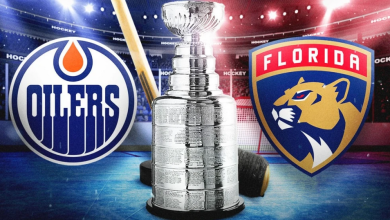This Day in Hockey History – November 20

Today in hockey history, a player sets a record and immediately extends that record, a rookie causes a scene, teammates each record identical milestones, a team makes a move that was probably long overdue, the Hall of Fame inducts a new class, and a day that probably will never happen again, at least not for a very long time
November 20, 1934 – Toronto’s Harvey Jackson became the first NHL player to score a hat trick in a single period of a regular-season game. He then became the first player to score four goals in a single period, doing so in the 3rd of a 5-2 Leafs win over the St. Louis Eagles.
November 20, 1979 – Playing in his first NHL game, Quebec Nordiques rookie Paul Stewart fought Boston’s Terry O’Reilly, Stan Jonathan, and Al Secord…and all in the first period. I guess that’s one way to get recognized. Stewart later became an NHL referee. Why am I not surprised? (He never wore a helmet, either).
November 20, 1988 – In a 7-4 win over the Oilers, Winnipeg’s Andrew McBain and Iain Duncan each scored their first NHL hat tricks. That’s kind of cute.
November 20, 1995 – The Senators made the first coach-firing in team history, canning Rick Bowness, who had been with the team since 1990 (he was replaced by Dave Allison). And, well, I don’t think he could argue much – he had a 39-178-18 record at the time, good for a .180 winning percentage. Ouch.
November 20, 1995 – The Hockey Hall of Fame inducted its newest members: Larry Robinson, Fred “Bun” Cook, Bill Torrey, and Brian McFarlane.
November 20, 1955 – With all six teams in action (there were only six teams in the Original Six Era) – Montreal at New York, Toronto at Boston, Detroit at Chicago – all three games ended in 1-1 ties. What are the chances of that happening?? Well, since I love math, I’m going to throw some numbers your way: kids, get your pen and pencils ready for note taking:
Let’s assume that, for the purposes of this event, that each team cannot score more than seven goals. Looking at all the scores of each team across the board for that season, scoring seven goals was not too rare a feat, but any more than that was, and scoring between one and five goals was the most common. So it’s not exact, but assuming that there’s an equal to chance to “randomly” score any number of goals between zero and seven isn’t too far off.
With that established, that means that, if they can only score between zero and seven goals (eight numbers), any one team’s “odds” of scoring exactly one goal in a game are one-in-eight, or 12.5 percent. Although there are many other factors, we’ll assume their opponent’s “odds” are the same, meaning they also have one-in-eight chance to score exactly one goal. For the two teams to each score one goal, we multiply those percentages, as fractions (so 1/8), giving us a one-in-64 chance that any given game ends by the score of 1-1.
But that’s just one game. Now the same has to happen for all three games. Since what we’re really trying to figure out is all three games ending with the exact same score, not necessarily by the score of 1-1, we only have to have two teams match the other team. So if Game A’s score ended 3-2, we’d want to figure out the odds of the other two games (Games B and C) ending with the score of 3-2, which is probably about the same odds as 1-1. So, we now have to multiply the odds of Game B ending with the exact arbitrary score of Game A (1-1 in this instance) by the odds of Game C ending with the exact score of Game A as well, both of which are one-in-64. The product of those results? One-in-4096.
In conclusion, that means that the odds of all three games ending with the exact same score on the same day is one-in-4096, or .024 percent. And now let’s assume that exactly three games are played 30 times a season, a number chosen based on a rough estimate by today’s NHL schedule of 30 teams. And you have to go with three games, because having all of two games end with the same score isn’t really a feat at all, and having four games end with the exact same score now becomes a one-in-262,144 chance. So, that means we can expect a day in which three games are played and each game ends with the same score just once every 136 seasons (4,096 divided by 30). And you can apply that logic to almost any season in the NHL’s history, because 30 days per season in which exactly three teams play is probably a fairly accurate number. That may never happen again (although today’s low-scoring games are giving it a chance). Phew. Math!
Source: Hockey Hall of Fame




